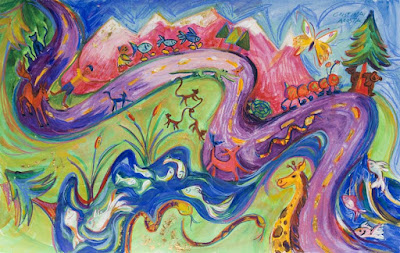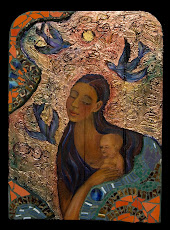
Have you ever wondered why when fashions change with the season you see a lot of the same colors at a clothing store or home decor store and those same colors seem to be everywhere? If you think it's because those colors are suddenly "in-style" by some magical arrangement of molecules, think again. The group think behind the styles in colors comes from, you guessed it -- a group!
The Color Marketing Group is the first big player in the color forecasting world. An international association for color design professionals, the Color Marketing Group creates color forecast information for professionals who design and market color.
The Pantone Color Institute is the leader in color tools. They bills themselves as, ". . .the world-renowned authority on color and provider of color systems and leading technology for the selection and accurate communication of color across a variety of industries. The PANTONE® Name is known worldwide as the standard language for color communication from designer to manufacturer to retailer to customer." I first used Pantone color systems when I painted billboards years ago. Design agencies would give me color numbers that cooresponded to a fan deck (or "book") of color swatches that were referred to as PMS (Pantone Matching System) colors.
Both the Color Marketing Group and Pantone Color Institute influence the colors used by manufacturers in industries across the board, including apparel, housewares, interior design, automobiles, and others. Don't think these groups are solely dictating color trends. They run a fine line between researching which colors are currently being used and then predicting which colors will be in use 1-2 even 5 years in the future. The people that think about color for industry application all the time usually have titles like: Color Forecaster, Color Stylist, Director of Color, etc. These people belong to groups that observe color use and social trends in the areas their customers (the manufacturers) sell to so that they can help the manufacturer create products in colors that people will buy.
Of course -- there is always an appetite for something that bucks the trend, so every color movement has it's corollary opposite. An example is the Eco color palettes vs. the Black-and-White color trend.
Keeping up on these trends is a full time job and often results in articles targeted for specific industries. The Paint & Decorating Retailer, an industry periodical published by the Paint & Decorating Retailers Association, explores product trends for the Paints and Coatings industry. They are a great resource for color trends in the paint market.
Trends in color are a result of the cultural/societal trends. Regardless of those trends, the colors you love and are drawn towards may merge with or oppose current color trends. So, pick and choose what you enjoy from the color trends and add in those colors that are close to your heart regardless of fashion. You'll be happier with your choices.
If you're looking to add color to your home, take a look at my Project Portfolio page for ideas. If you want some help to push the colors you love into a workable color palette, contact me and request my Free PDF E-Booklet detailing my color consulting service. (Put the words "Free PDF E-Booklet" in the comments box and I'll send you a link.
www.CristinaAcosta.com
Read more of my Choosing Colors blog entries.

























